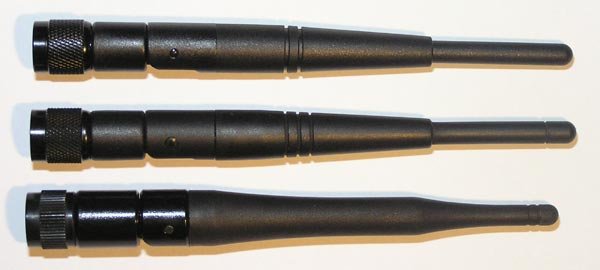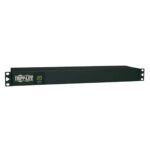Rubber Duck Antenna: Reliable, Flexible Solution for Wireless

The rubber duck antenna is one of the most widely used antennas for portable and wireless devices. Recognized for its unique shape and resilient material, this flexible antenna serves a variety of applications, from handheld radios to Wi-Fi routers and GSM communication systems. The versatility of rubber duck antennas makes them an ideal choice for maintaining signal integrity in portable devices where durability and flexibility are key.
This article will discuss the rubber duck antenna, including popular variations like the GSM rubber duck antenna and the 5dBi rubber duck antenna, and explore the applications, advantages, and considerations associated with this popular antenna type.
What is a Rubber Duck Antenna?
A rubber duck antenna is a type of omnidirectional antenna commonly used on portable devices. It gets its name from its rubber or plastic outer coating, which resembles a duck’s flexible bill. Inside, it typically consists of a helical or straight conductor, which transmits and receives radio frequency (RF) signals. Unlike many rigid antennas, the rubber duck antenna is flexible and can withstand bending, making it a robust option for portable and rugged applications.
The primary function of a rubber duck antenna is to provide a reliable signal while remaining flexible, compact, and durable. Rubber duck antennas operate as omnidirectional antennas, radiating signals uniformly in all directions, which makes them ideal for applications where consistent connectivity is required, regardless of the device’s orientation.
Applications of Rubber Duck Antennas
Rubber duck antennas are used in various devices and industries, including:
- Handheld Radios: Portable two-way radios, such as those used by public safety personnel, frequently use rubber duck antennas for their combination of durability and reliable signal transmission.
- Wi-Fi Routers and Access Points: Many Wi-Fi routers and wireless access points are equipped with rubber duck antennas, allowing them to transmit and receive signals across a wide area within the 2.4 GHz or 5 GHz bands.
- GSM Devices: A GSM rubber duck antenna is often used in GSM communication devices to facilitate mobile network access. These antennas are designed to work within the frequencies used by GSM networks (around 900 MHz and 1800 MHz).
- IoT and M2M Applications: In the Internet of Things (IoT) and machine-to-machine (M2M) communication devices, rubber duck antennas provide connectivity in industrial and remote applications where durability is essential.
Key Features of Rubber Duck Antennas
Rubber duck antennas are valued for their unique features, which make them particularly suitable for portable and wireless applications:
Omnidirectional Radiation Pattern
Rubber duck antennas are designed to radiate signals equally in all horizontal directions. This omnidirectional pattern allows them to maintain a consistent signal, making them ideal for applications where the device’s orientation changes frequently, such as with handheld radios.
Compact and Flexible Design
The flexibility of rubber duck antennas is one of their greatest advantages. Their rubberized exterior not only protects the internal components but also allows the antenna to bend without damage. This design makes it resistant to accidental impacts, which is essential in outdoor or mobile environments.
Frequency Compatibility
Rubber duck antennas are available in a range of frequencies to match specific applications. Wi-Fi rubber duck antennas commonly operate at 2.4 GHz or 5 GHz, while GSM rubber duck antennas are designed to work at around 900 MHz and 1800 MHz. Ensuring frequency compatibility is important when selecting the right antenna for a specific device.
Gain Levels
Rubber duck antennas come in different gain levels, allowing users to select the appropriate gain for their application. For instance, a 5dBi rubber duck antenna offers a higher gain than a standard rubber duck antenna, extending the coverage area without sacrificing signal quality. High-gain rubber duck antennas are useful for applications that require a stronger signal over a wider area, such as certain Wi-Fi or IoT applications.
Types of Rubber Duck Antennas
Standard Rubber Duck Antenna
The standard rubber duck antenna is designed for general-purpose use, offering reliable performance in a compact, flexible form. These antennas are often found on handheld devices and portable radios where durability and consistent signal reception are prioritized.
GSM Rubber Duck Antenna
A GSM rubber duck antenna is optimized for mobile network frequencies, particularly those used by GSM (Global System for Mobile Communications) devices. These antennas work well within the 900 MHz and 1800 MHz bands, allowing GSM devices to maintain connectivity with cellular networks. GSM rubber duck antennas are commonly used in mobile communication devices, IoT systems, and remote monitoring applications.
5dBi Rubber Duck Antenna
The 5dBi rubber duck antenna is a high-gain antenna that offers a 5-decibel increase in signal strength compared to a typical low-gain rubber duck antenna. The higher gain improves the antenna’s effective range, making it suitable for applications requiring extended coverage. However, a 5dBi rubber duck antenna may have a slightly narrower beamwidth, so it is often used in environments where a stronger but more focused signal is beneficial, such as outdoor Wi-Fi networks.
Advantages of Rubber Duck Antennas
Durability
The rubber or plastic covering on a rubber duck antenna provides it with excellent resistance to wear and tear. This rugged exterior protects the antenna in harsh environments, making it a popular choice for portable and industrial applications.
Portability and Flexibility
Rubber duck antennas are lightweight, compact, and easy to install, making them highly portable. Their flexibility allows for easy handling and installation on various devices, from handheld radios to IoT modules.
Wide Range of Applications
Due to their design versatility and available frequency ranges, rubber duck antennas can be used in a broad array of applications. From consumer Wi-Fi devices to professional-grade GSM systems, rubber duck antennas provide reliable performance across multiple industries.
Easy Installation
Rubber duck antennas are typically connected via standard connectors, such as SMA, RP-SMA, or TNC connectors, allowing for quick and easy installation or replacement.
Considerations When Choosing a Rubber Duck Antenna
When selecting a rubber duck antenna, it is essential to consider the following factors:
- Frequency Compatibility: Ensure that the antenna operates within the required frequency band for your application. A GSM rubber duck antenna, for example, is optimized for cellular frequencies, while Wi-Fi rubber duck antennas work within the 2.4 GHz or 5 GHz ranges.
- Gain Requirements: Choose the appropriate gain level based on your application’s needs. A 5dBi rubber duck antenna offers increased range, which can be beneficial for outdoor or wide-area applications. However, lower-gain antennas may offer better performance in situations where the signal needs to cover a broad area with minimal directional focus.
- Connector Type: Verify that the antenna has a compatible connector for your device. Common options include SMA, RP-SMA, and TNC connectors, so be sure to match the connector type with your device’s requirements.
- Environmental Conditions: Consider whether the antenna will be used in a rugged or harsh environment. Rubber duck antennas are generally durable, but for extremely challenging conditions, selecting an antenna with added waterproof or weatherproof protection may be beneficial.
Applications in Emerging Technologies
Rubber duck antennas play an important role in modern wireless applications, including the Internet of Things (IoT) and M2M communications. In these environments, reliability, ease of installation, and low-cost deployment are crucial. Rubber duck antennas enable seamless connectivity in remote locations where devices must maintain stable communication despite environmental conditions.
For cellular applications, GSM rubber duck antennas support mobile network connectivity, essential for remote monitoring, asset tracking, and emergency response systems. The rise of smart cities, connected vehicles, and other IoT applications further demonstrates the need for durable, flexible, and efficient antennas like rubber duck antennas.
Conclusion
The rubber duck antenna is a practical, versatile solution for wireless communication. Available in variations like the GSM rubber duck antenna and the 5dBi rubber duck antenna, these antennas serve diverse applications, from Wi-Fi routers and handheld radios to IoT and GSM systems. With its combination of durability, flexibility, and ease of installation, the rubber duck antenna provides consistent performance across a wide range of frequencies and applications. Whether for a high-gain 5dBi setup or a compact, low-gain application, rubber duck antennas continue to be a valuable asset in wireless technology.






